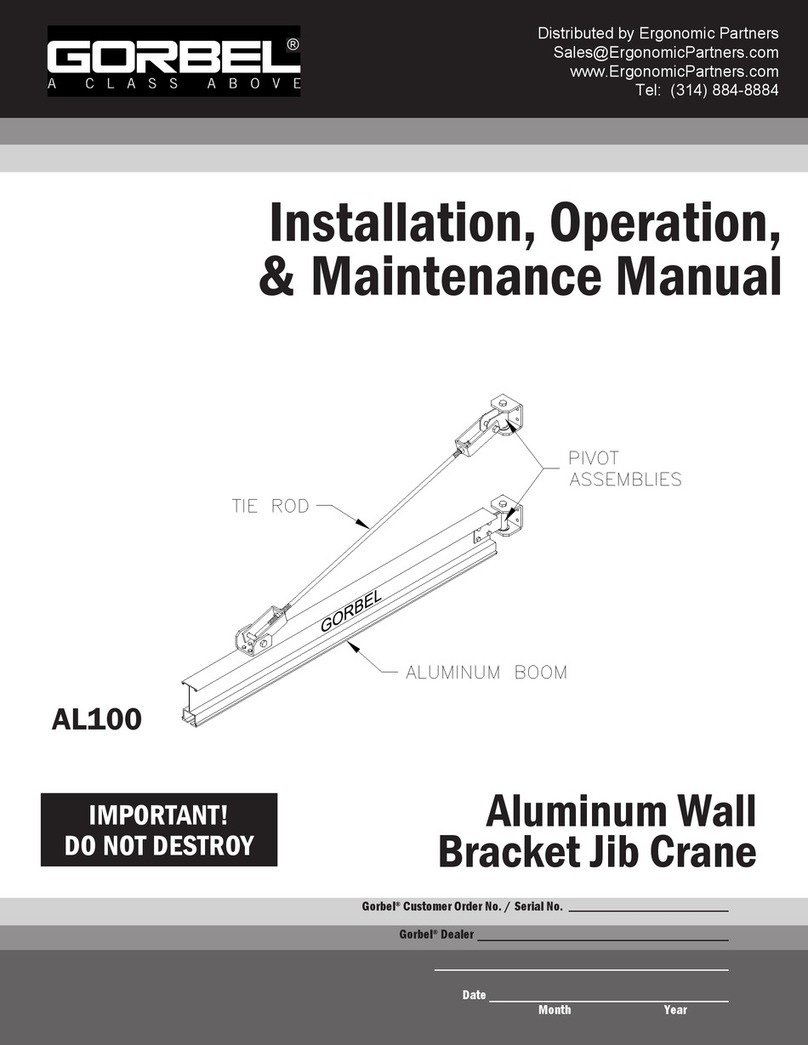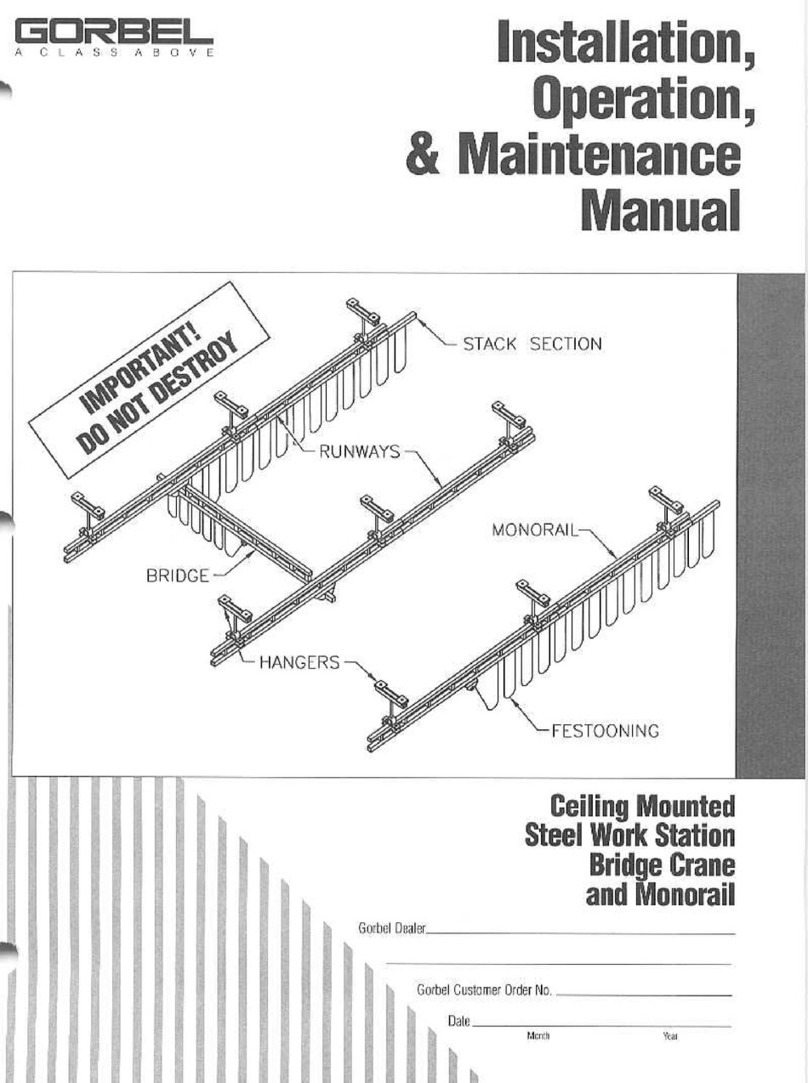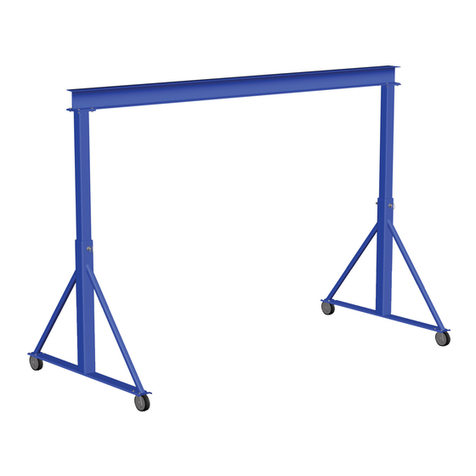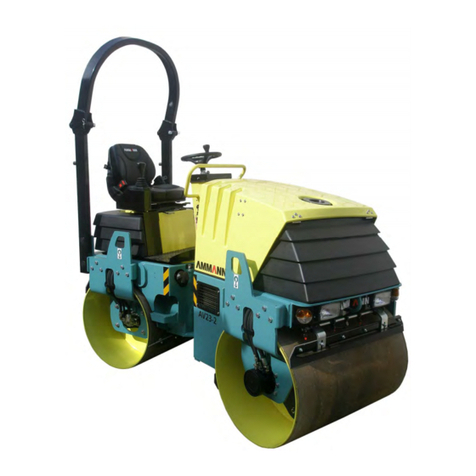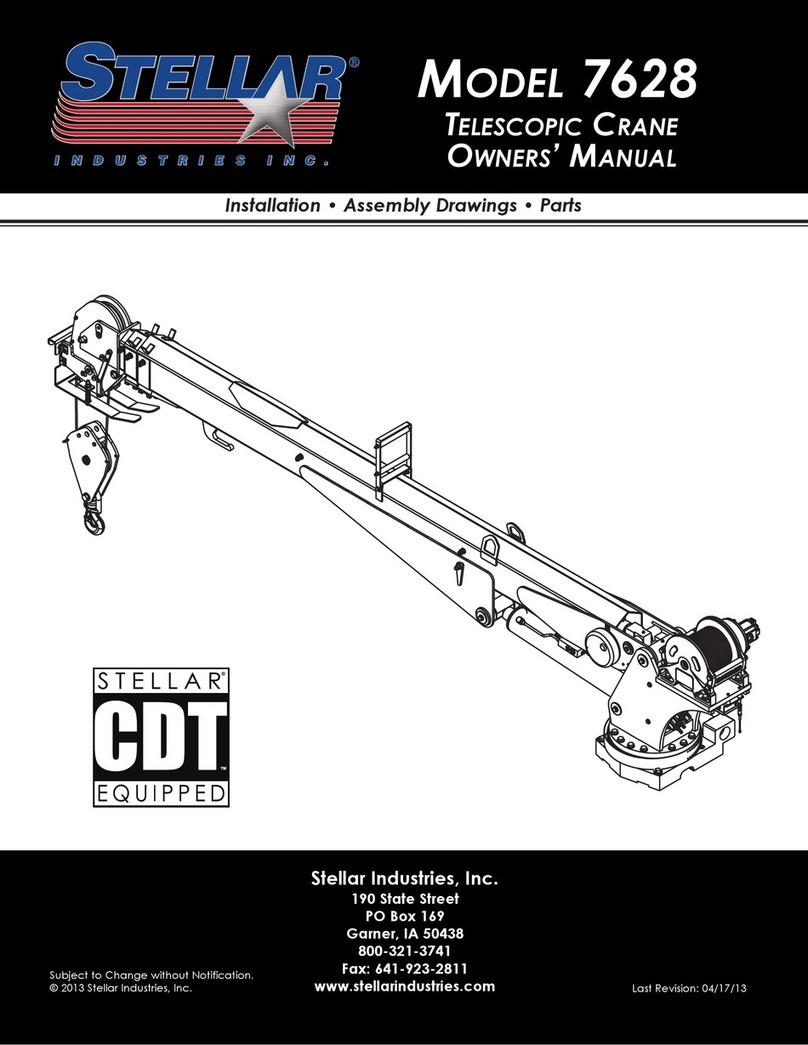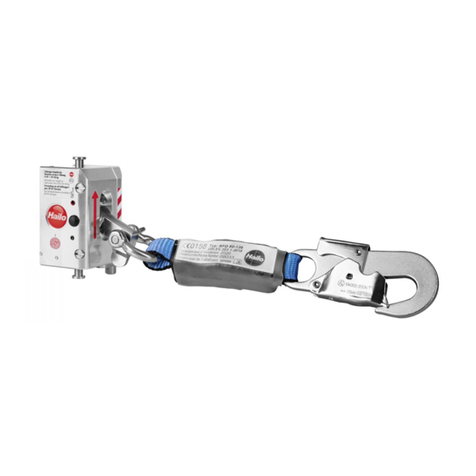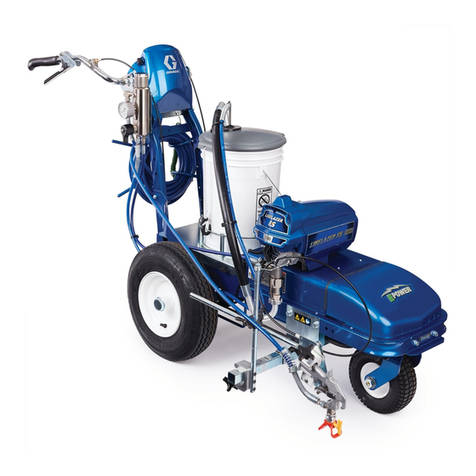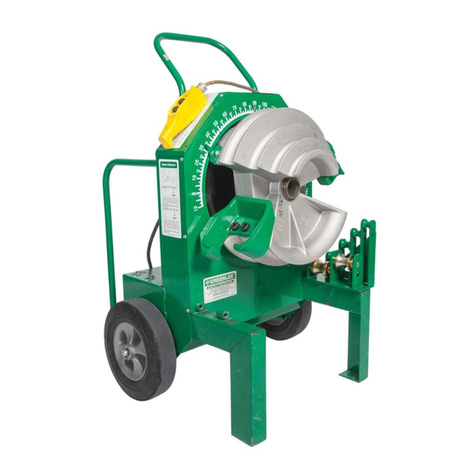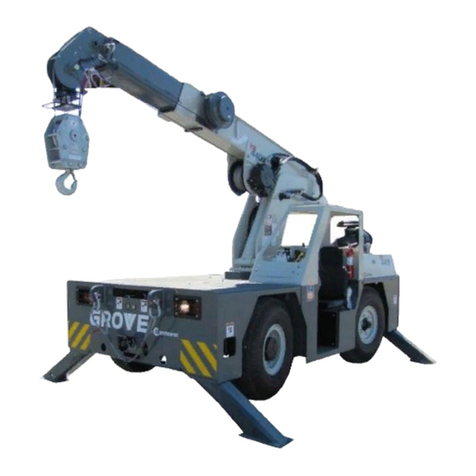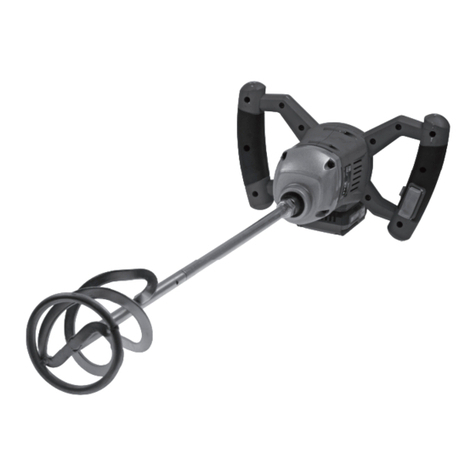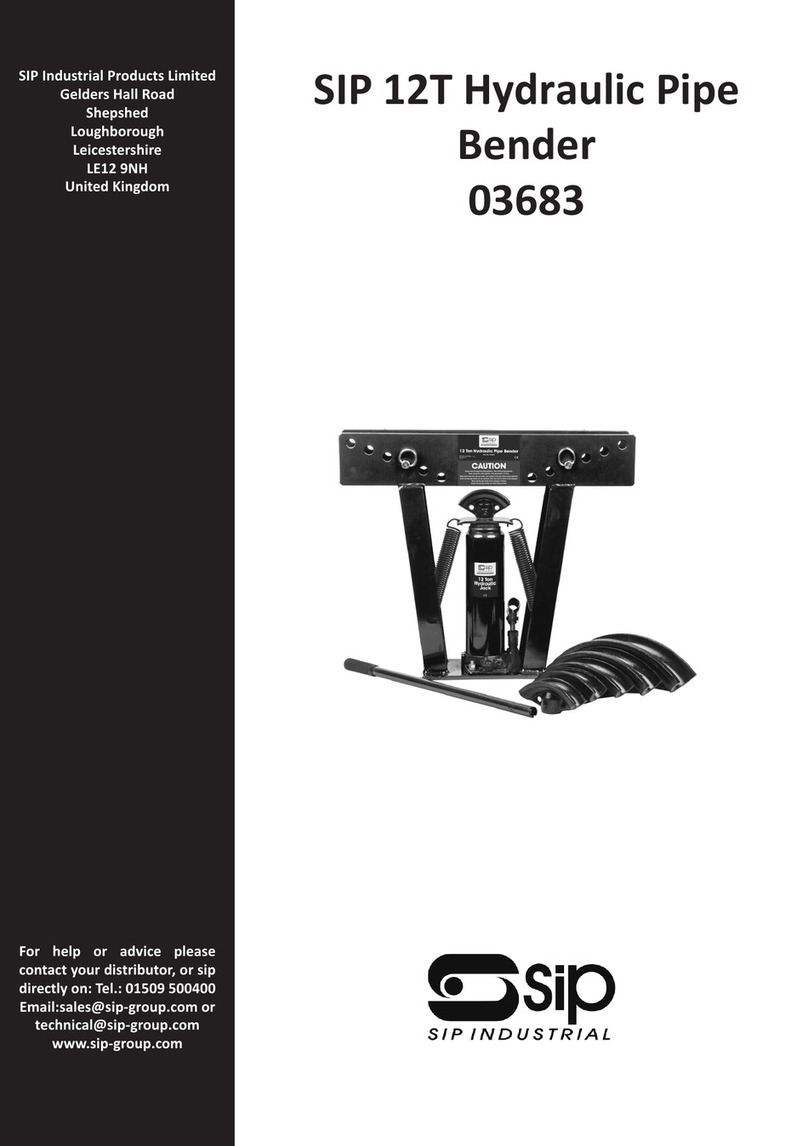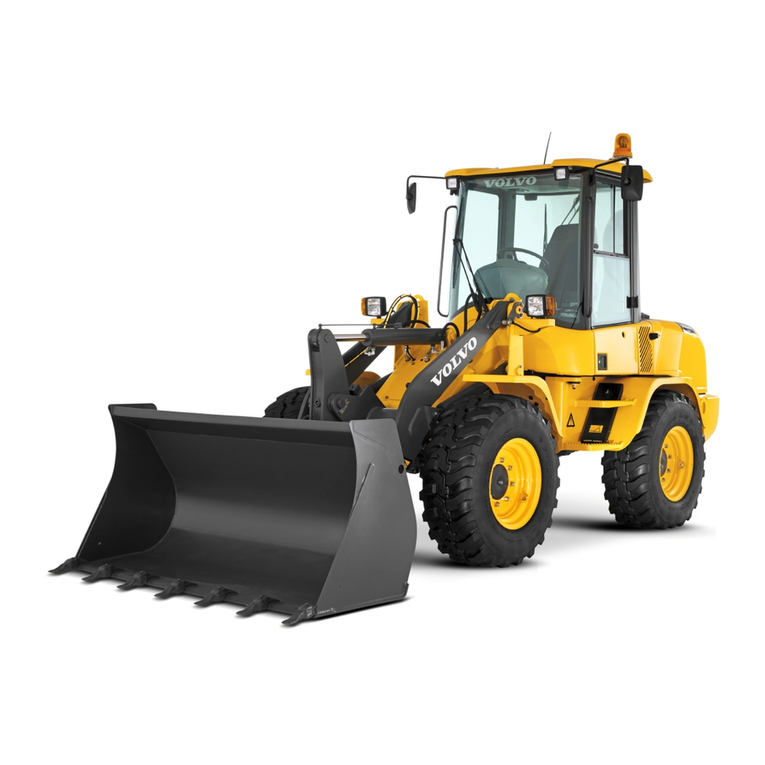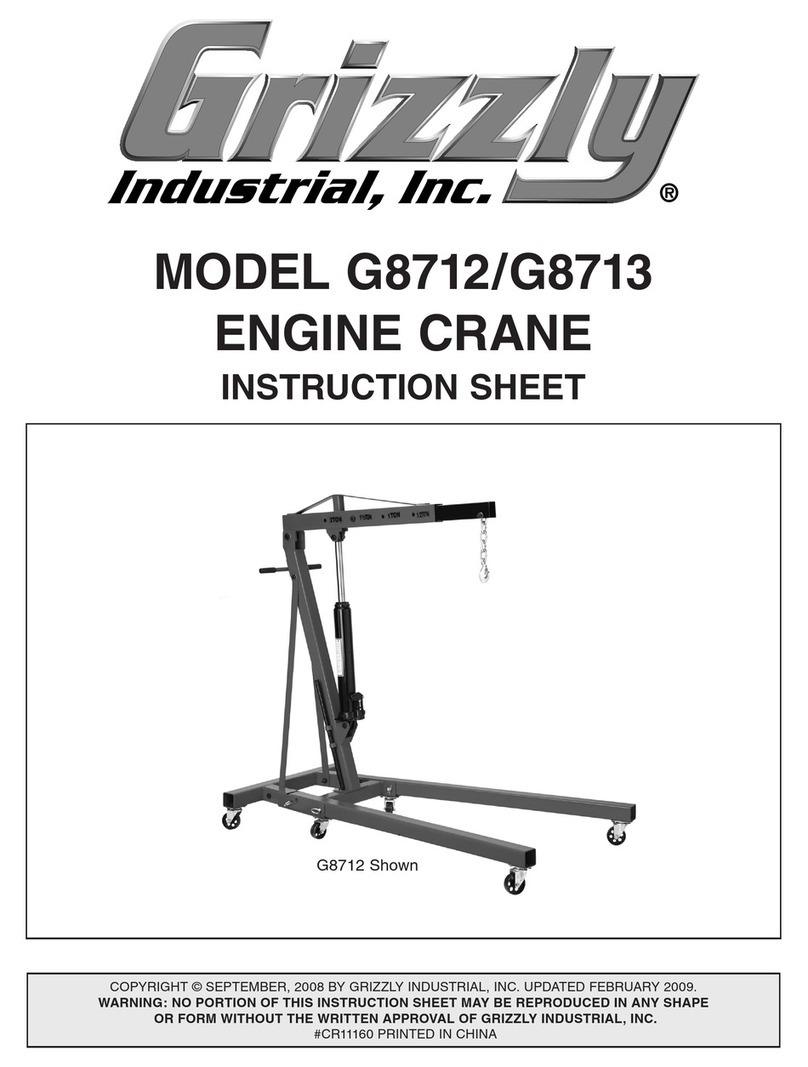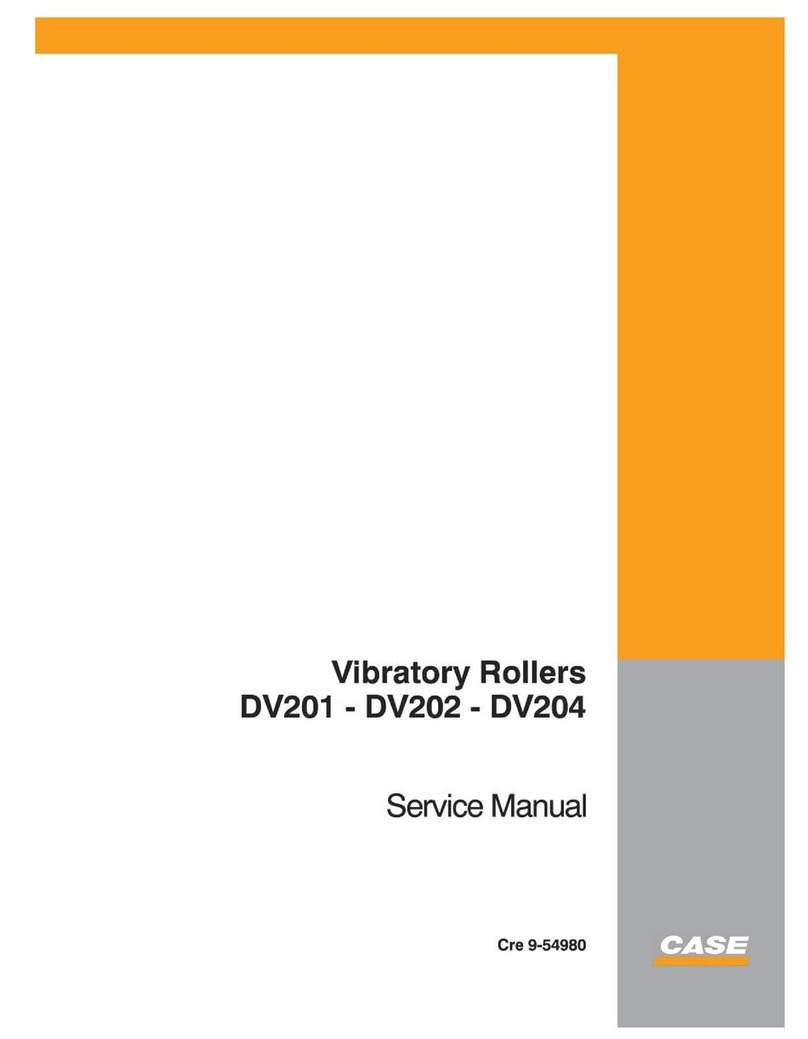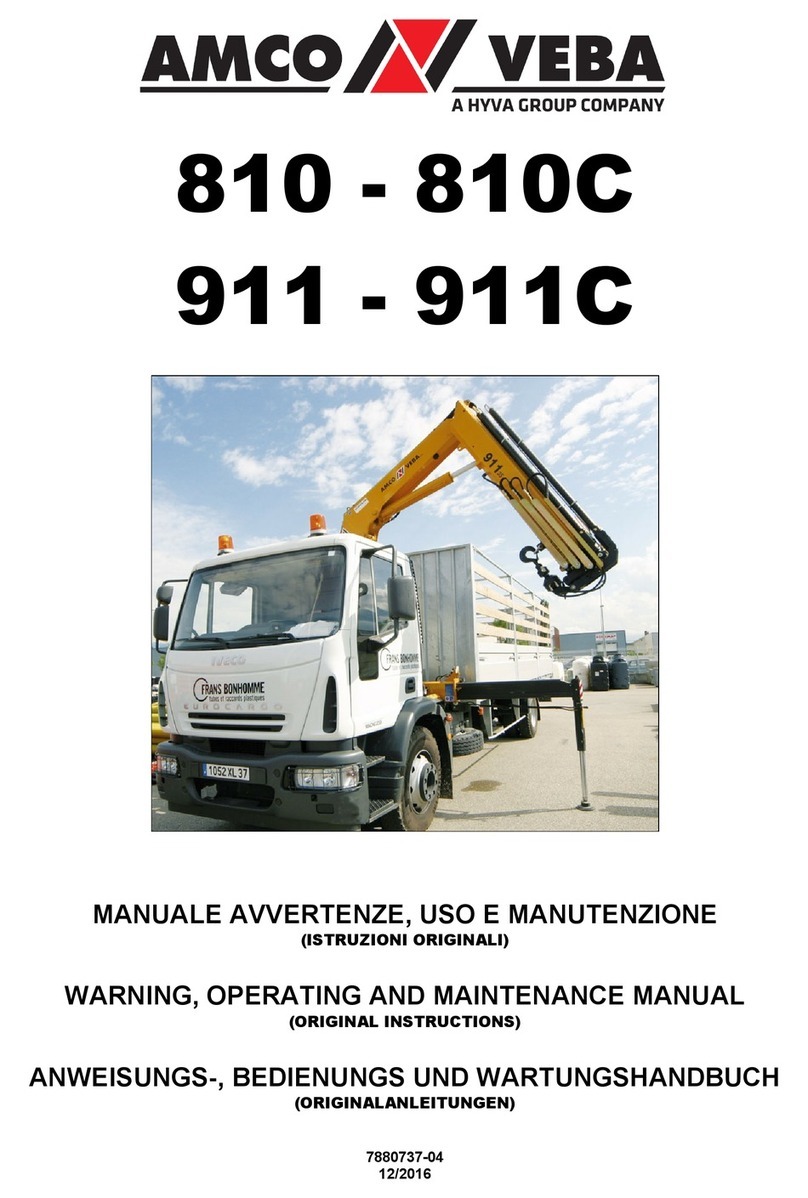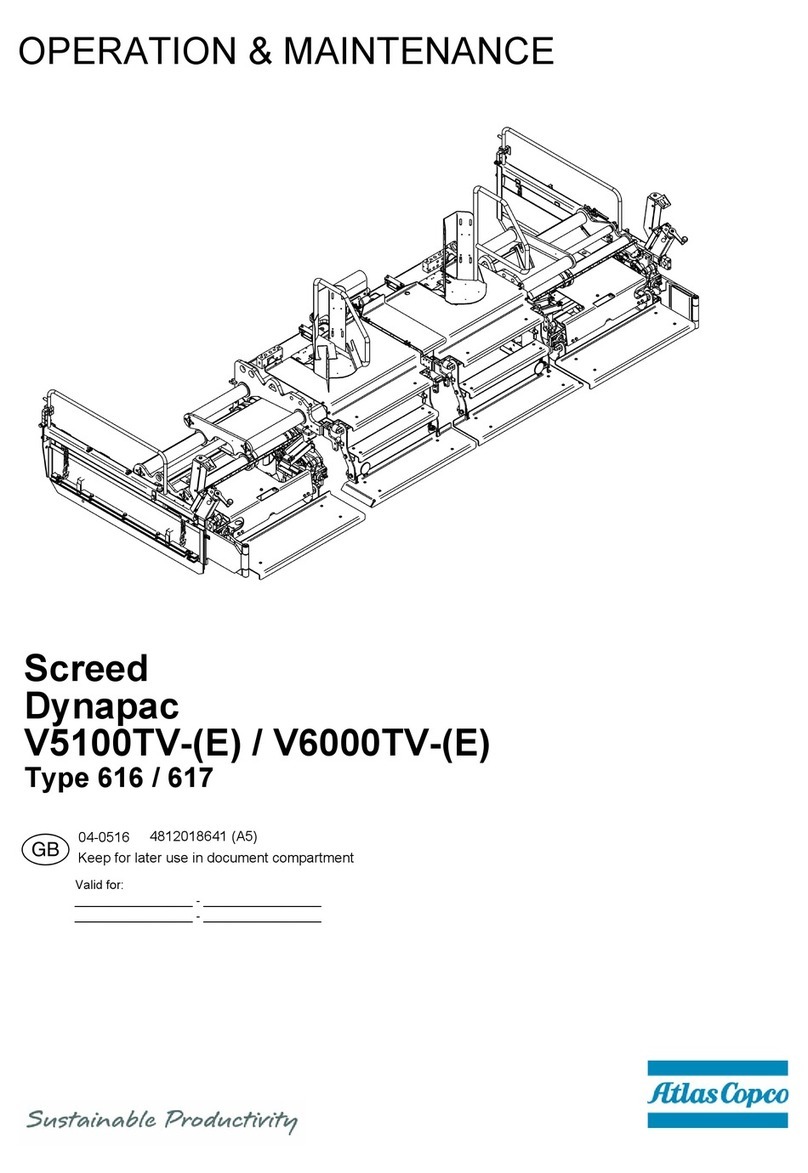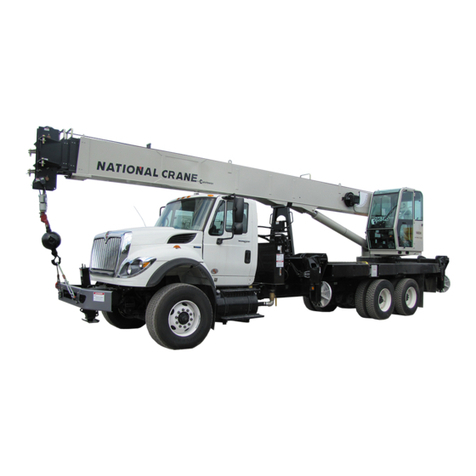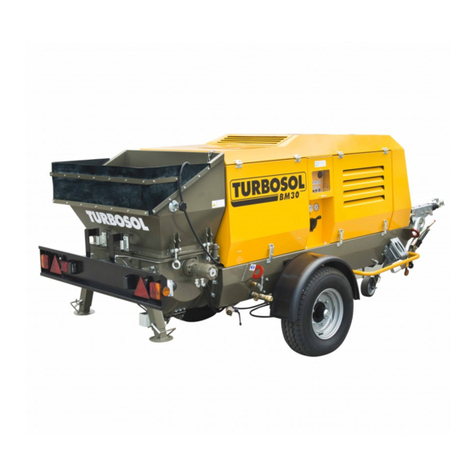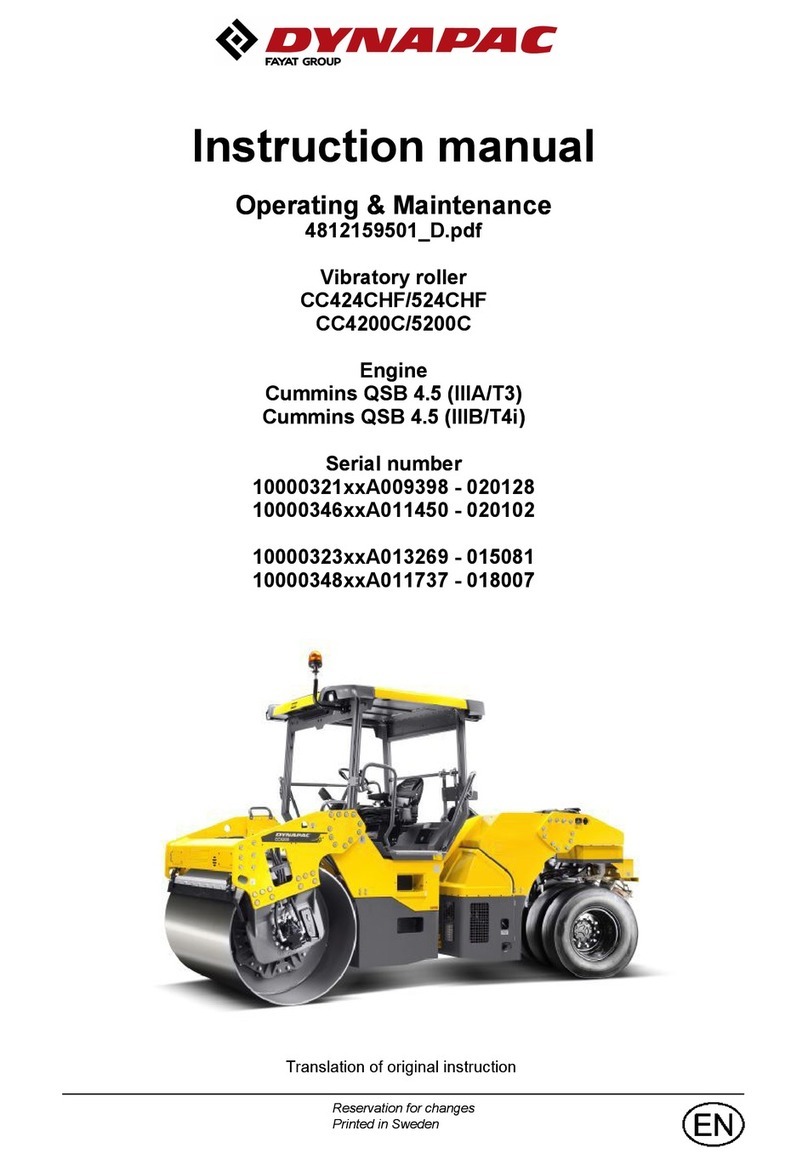GORBEL Tarca System Instruction manual

IMPORTANT!
DO NOT DESTROY
Installation, Operation,
& Maintenance Manual
Month Year
Gorbel®Dealer
Date
Totally Free Standing
Tarca®System
Gorbel®Customer Order No. / Serial No.
®
Issued: 06/2010
Revised: 03/2019

This page intentionally left blank.

TABLE OF CONTENTS
Introduction............................................................................................................ 1
Installation
Step 1 - Pre-assembly..........................................................................................................2
Step 2 - Column Weldment Installation................................................................................3
Step 3 - Header Weldment Installation ................................................................................4
Step 4 - Runway Installation............................................................................................. 5-8
Step 5 - Runway and Bridge End Stop Installation.......................................................... 8-9
Step 6 - Bridge and End Truck Installation .................................................................... 9-11
Step 7 - Carrier Installation........................................................................................... 11-12
Step 8 - C-Track Festooning Installation (Optional) ..................................................... 13-15
Step 9 - Enclosure Mounting Detail (Pre-Assembled)........................................................15
Step 10 - Bridge Girder Conduit Installation.........................................................................16
Step 11 - Motor Wiring .........................................................................................................17
Step 12 - Runway Conductor Bar Installation (Safe-Lec) .............................................. 18-19
Step 13 - Runway Conductor Bar Installation (SAFPOWRBAR®)................................ 20-27
Step 14 - Sway Brace Installation (Optional) .......................................................................28
Step 15 - Final Steps............................................................................................................29
Crane Operator Instructions.................................................................................30
General Safety Suggestions.................................................................................30
Limited Warranty ..................................................................................................31
Periodic Inspection and Lubrication Recommendations ................................. 33-36
Questions? Concerns? Comments? Please call (800) 821-0086 (US and Canada) or
(585) 924-6262 (outside US).
9/18 Rev. F

This page intentionally left blank.

INTRODUCTION
Thank you for choosing Gorbel®Tarca®Systems to solve your material handling needs. The innovative design and
heavy-duty construction of the Gorbel®Tarca®Systems will provide a superior quality product that will offer years
of long term value. The hoist weight allowance is 15% of the crane’s capacity (for example, a crane rated for 6000
pounds allows for a 6000-pound live load plus 900 pounds for the weight of the hoist). There is also an allowance
of 15% of the crane capacity for impact caused by hoist use. Gorbel®Tarca®Systems will provide many years of
dependable service by following the installation and maintenance procedures described herein.
Dimensions contained in this installation manual are for reference only and may differ for your particular
application. Please refer to the enclosed General Arrangement Drawing for actual dimensions.
Normal safety precautions prior to load testing: These include, but are not limited to:
• Checking for obstructions in crane travel.
• Checking that all bolts and threaded rods are tight and have lockwashers.
• Making sure that endstops are in place and functional (i.e. stopping rolling equipment from exiting rail).
• Making sure that festooning cannot be snagged or pinched, whether it is electric or pneumatic.
• For additional safety precautions, see page 30.
WARNING
Gorbel Inc. assumes no responsibility for adequacy or integrity of the mounting surfaces or the structure that the
crane may be mounted to. Gorbel Inc. will not be liable for any loss, injury or damage to persons or property, nor
for damages of any kind, resulting from the failure or defective operation of any materials not supplied directly by
Gorbel Inc. Bracing systems, if used, must be approved by a local professional engineer.
WARNING
A minimum of a 6”-thick reinforced concrete floor is required. Gorbel, Inc., assumes no responsibility for adequa-
cy or integrity of the mounting surface. Support assemblies are designed to AISC (American Institute of Steel
Construction) specifications. See pages 33-36 for maintenance schedule.
WARNING
Equipment described herein is not designed for, and should not be used for, lifting, supporting or transporting
humans. Failure to comply with any one of the limitations noted herein can result in serious bodily injury and/or
property damage. Check State and Local regulations for any additional requirements.
WARNING
Crane cannot be utilized as a ground: A separate ground conductor is required. For example, systems with 3 phase
power require three conductors plus one ground conductor.
WARNING
Reference the American Institute of Steel Construction (AISC) Manual of Steel Construction Specification
for Structural Joints using ASTM A325 or A490 Bolts, Installation, Pretensioned Joints, Calibrated Wrench
Pretensioning for the proper procedures to follow when using any torque tightening method.
WARNING
Please read entire manual prior to starting installation.
1
9/18 Rev. F

INSTALLATION
STEP 1 - PRE-ASSEMBLY
1.1 Check packing list to make sure correct quantity of parts is included.
1.2 Tools and materials (by others) typically needed to assemble crane are as follows:
• Mallet • Torque wrench
• Chalk line • Tape measure
• Hand tools • Ladders/man lifts
• Grout • Clamps (large C)
• Spud wrench • Leveling tools (transit, laser level, water level, etc.)
• Shop brush • Lifting device to lift heavy runways, bridges, headers
• Steel shims • Welder (if splices are welded)
• Large square • 3/4” anchor bolts (by others, see 1.3 for guidelines in
determining length)
1.3 Recommended guidelines for determining bolt size and type:
Anchor bolts must:
• be 3/4” in diameter.
• be grade 5 or better.
• be embedded at least 4” into
floor, not to exceed 3/4 of floor
depth (diagram 1A).
• have minimum of two threads
above nut.
Note: A minimum 6”-thick reinforced concrete floor is required.
Note: Free Standing Patented Track Bridge Crane foundation requirements are based on
a minimum soil pressure of 2500# per square foot. Concrete should be a minimum of
3000# per square inch of compressive concrete. Columns should be centered on a two
foot by two foot square area that is free from cracks, seams and walls.
Note: Grout is required to ensure the base plate has full contact support to the floor/
footing. Shimming/leveling nuts under the base plate are acceptable methods that would
aid leveling of the columns prior to setting the columns on the grout bed (shimming/
leveling nuts by others). Grout must be a non-shrink, high compressive machinery type
grout.
Note: Chemical (epoxy) anchor bolts are recommended. Chemical anchors to withstand a
minimum of 4880# of pull our force.
TIP: Packing list can be found in envelope attached to hardware box: General Arrangement
Drawing can be found inserted in this installation manual.
TIP: Recommended guidelines to help you determine anchor bolt size are supplied below
(anchor bolts are not included).
Diagram 1A. Typical anchor bolt embedment.
29/18 Rev. F

STEP 2 - COLUMN WELDMENT INSTALLATION
2.1 Lay out and mark on floor exact position of column weldments prior to proceeding with
installation (refer to enclosed General Arrangement Drawing for recommended
dimensions and column weldment location).
2.2 Position first column weldment in place. Orient column cap plate (top of column) as shown
in diagram 2A.
2.3 While supporting column weldment, drill holes in concrete floor using pre-drilled holes in
column weldment base as a guide (use drill bit size recommended by anchor bolt
manufacturer). Vacuum or brush away cement dust.
2.4 Install anchor bolts (not included) and hardware according to manufacturer’s installation
directions and requirements.
2.5 Check to see if column weldment is plumb. If column weldment is not plumb, loosen
anchor bolt nuts and place steel shims (if required, not included) then grout (not included)
under base of column weldment until plumb. After column weldment is plumb, tighten all
nuts (see diagram 1A, page 2).
2.6 Install remaining column weldments (repeat Step 2.2 through 2.5).
TIP: Be sure that column cap plate (top of column) is oriented in direction of header
weldment. Column gussets must face inward towards bridge and runway as
shown.
Diagram 2A. Orienting column top plate.
3
9/18 Rev. F

49/18 Rev. F
STEP 3 - HEADER WELDMENT INSTALLATION
3.1 Lift and position header weldment onto two secured
column weldments (refer to enclosed General
Arrangement Drawing for recommended dimensions
and header weldment location). Using beam clamps
(depending on design) and hardware provided, attach
header weldment to column weldment.
3.2 Tighten hardware. Refer to chart 3A for proper
torque.
3.3 Install remaining header weldments (repeat Steps
3.1 through 3.2).
WARNING
There must be a minimum of two threads
showing at the end of the bolt.
Diagram 3B. Installing header weldments.
Diagram 3A. Header length.
Diagram 3C. Beam Clamp Installation.
TIP: 10” tall, wide flange headers with 5/8” hardware require a shim (supplied) to
obtain the correct beam clamp tail length to match the header flange thickness.
WARNING
If shimming column, shim must be located between floor and baseplate. Shims must not
be located at top of column.
BEAM
CLAMP SIZE TORQUE MINIMUM BOLT
PRETENSION
5/8” 109 ft.-lbs. 12.3 kips
3/4” 210 ft.-lbs. 19.8 kips
1” 355 ft.-lbs. 25 kips
Chart 3A. Beam Clamp Torque Chart.
Direct Bolt Connection
Beam Clamp Connection

STEP 4 - RUNWAY INSTALLATION
Runways to Header Weldment Connections
4.1 Suspend runway section under installed support structure (refer to enclosed General
Arrangement Drawing for recommended dimensions and runway location).
4.2 Using beam clamps (depending on design) and hardware provided, attach runway section
to header weldment, as shown in diagram 4A. See chart 3A, page 4, for torque charts.
4.3 Check to make sure that runway is level
(within +/-1/4”) and parallel to opposite
runway (within +/-3/16”) over any span.
4.4 Tighten hardware (chart 3A, page 4), for
proper torque rating.
4.5 If you DO NOT have additional runways to install, proceed to Step 5.1, on page 8;
otherwise proceed to Step 4.6 on page 6.
Diagram 4A. Attaching runway to header weldment.
WARNING
Do not deviate from the bridge “span”
dimension shown on the General
Arrangement drawing. Bridge “span” is
the distance (+/- 3/16”) between runways
(centerline to centerline).
WARNING
There must be a minimum of two threads showing at the end of the bolt.
5
9/18 Rev. F
TIP: Runway to be centered under gussets (diagram 4A).
Diagram 4B. Track Perpendicularity.
WARNING
If shimming runway, shim must be located between washer plate and top of runway.
Beam Clamp Connection Direct Bolt Connection

69/18 Rev. F
Splice Joint Instructions
4.6 Bring the ends of the track sections together as close as possible (diagram 4C).
4.7 Align holes in washer plate with the slots in the top flange of the rail. Tighten beam clamp
hardware. This will help align the top flange portion of track sections (diagram 4D).
4.8 Place web splice plate(s) on each side of web section. Align plate as shown (diagrams
4E and 4F for welded splice or diagrams 4H and 4J for bolted splice).
4.9 Web splice plates to be welded in accordance with American Welding Society (AWS)
specification D1.1 using E70xx electrodes (diagram 4G).
4.10 Check to see that the transition from one track to the other is smooth: no raised areas to
inhibit carrier or end truck operation (diagram 4C).
4.11 For additional runways repeat Steps 4.6 through 4.10.
WARNING
Reference the General Arrangement Drawing for splice locations. It will be necessary to install
adjacent runways at the same time.
WARNING
Track sections and web plate need to be carefully aligned before field welding of plates to
allow smooth transition between sections.
Diagram 4E. Welded splice (4200-4600 Tarca® beam). Diagram 4F. Welded splice (5000 & Larger Tarca® beam).
WARNING
If welding of lower track is desired (not required), different electrodes are required for mild steel
vs. hardened steel. E7018 is used for mild steel only (web and top flange). E11018 must be
used for hard steel and may also be used for mild steel.
Diagram 4C. Rail Alignment. Diagram 4D. Attaching header to top flange.
WARNING
If shimming runway, shim must be located between washer plate and top of runway.

STEP 4 - RUNWAY INSTALLATION (CONTINUED)
Diagram 4G. Splicing Runways together.
7
9/18 Rev. F
Diagram 4H. Bolted splice (4200 - 4600 Tarca® beam). Diagram 4J. Bolted splice (5000 and larger Tarca® beam).
Diagram 4K. Runway alignment tolerance.

STEP 5 - RUNWAY AND BRIDGE END STOP INSTALLATION
5.1 End stops are required and must be installed at the ends of the carrier or trolley travel and
at the end of crane travel on runways (diagram 5A).
Diagram 5A. End stop.
Diagram 4K (Continued). Runway alignment tolerance.
89/18 Rev. F

STEP 5 - RUNWAY AND BRIDGE END STOP INSTALLATION (CONTINUED)
5.2 The standard end stops are for normal
applications where contacts with end stops are
infrequent and travel is at slow speed.
5.3 When service conditions are such that the
carrier, trolley, or crane will contact the end stop
frequently or at high speed, spring bumpers or
other energy absorbing type end stops are
available and should be used. For their
application and detail contact our Inside Sales
Department.
STEP 6 - BRIDGE AND END TRUCK INSTALLATION
FIRST STEPS:
6.1 Prior to adding bridge, wipe rail tread with a clean, dry
cloth to remove grit or debris that may have collected
during shipping, storage, or installation.
6.2 Lay bridge girder on floor. Stabilize the girder so that it
cannot tip over.
6.3 Place endtrucks on top flange of girder and orient them so that the motors will be in the
desired location (diagram 6A - solid lines indicate standard motor position). Center the
endtruck to bridge connection bolt pattern on the girder. Make sure that the bridge span
exactly matches the distance between runway centerlines. Also confirm that the endtrucks
are square to the girder by matching diagonal measurements.
6.4 Transpose the bolt pattern from endtruck to bridge girder. Match mark endtrucks and
bridge.
6.5 Drill bolt holes (Ø 49/64”).
6.6 Bolt endtrucks into place. Confirm that the bridge span is correct and endtrucks are
square.
Diagram 6A.
If customer is supplying bridge, go to step 6.2. If
endtrucks and bridge are ordered together, start at
step 6.9.
Chart 5A. Torque Chart.
9
9/18 Rev. F

STEP 6 - BRIDGE AND END TRUCK INSTALLATION (CONTINUED)
6.7 Weld squaring blocks into place according to
diagram 6B.
• All welds to be 3/16” fillet.
• Weld both sides of key, starting 1/2” from
endtruck channel.
• Weld in direction away from channel, as shown by
arrows in diagram 6B.
• Weld end of key.
6.8 Remove end trucks from girder.
6.9 Place end trucks onto runway. Drive head motors
should face inward and be located across from each
other as indicated in diagram 6A, page 9.
6.10 Lift bridge into place. The end trucks and bridge are
match marked. Make sure that the markings on the bridge and end truck correspond. The
bridge girder should be snug to the end truck. The squaring keys will fit around the outside
of the end truck body.
6.11 Make sure all runway endstops have been properly installed.
6.12 Attach the end trucks to the bridge with the end truck to bridge hardware provided
(diagram 6C). Tighten hardware according to chart 5A, page 9.
Diagram 6B.
Diagram 6C.
10 9/18 Rev. F

STEP 6 - BRIDGE AND END TRUCK INSTALLATION (CONTINUED)
6.13 If equipped, attach bracing to endtruck and
bridge girder as shown in diagram 6D.
6.14 Tighten endtruck and bridge hardware.
STEP 7 - CARRIER INSTALLATION
7.1 If ordered, Gorbel will provide one of the following motor driven carriers:
Motor Driven Carriers With Electric Hoists (Hoists by Others) - WT and WS Series
Diagram 7A. WT Carrier (2 Head).
Diagram 7B. WS
Carrier (2 Head).
Diagram 7C. WT Carrier (4 Head).
Diagram 7D. WS Carrier (4
Head).
Diagram 6D.
WARNING
Diagram 6D is for reference only. Your actual
end truck may vary, but bracing basics are the
same.
11
9/18 Rev. F

STEP 7 - CARRIER INSTALLATION (CONTINUED)
7.2 Clean bridge track tread surface with a clean, dry cloth (do not use any kind of cleaning
solution) to remove grit or debris that may have collected during shipping, storage, or
installation.
7.3 Be sure end stop is installed opposite the end of bridge from the end carrier is loaded into.
7.4 If possible install carrier by inserting onto end of bridge girder.
7.5 If end clearance prohibits sliding the carrier onto track, drive and idler heads have to be
split and reassembled on the bridge girder. If this is the case, both end stops should be
installed. Single piece frame type idler heads can be installed on the track by removing
the wheels.
7.6 If a tow arm is being utilized assemble the
tow arm weldment to the carrier on the
festooning side of the bridge (diagram 7E).
7.7 Install remaining endstop on the bridge
girder (Step 6, on page 9).
7.8 Make sure all connections are secure using
the proper hardware and torque to
specification.
7.9 If hoist and carrier were not pre-assembled, assemble trolley to hoist per manufacturer’s
assembly instructions.
Diagram 7E. Standard tow arm orientation (top view).
12 9/18 Rev. F

STEP 8A - WEB MOUNT C-TRACK FESTOONING INSTALLATION (OPTIONAL)
8A.1 Install first cross arm support piece to the pre-drilled web holes
using the hardware provided. Remaining cross arm supports to be
installed at 5’-6” increments along web of rail.
8A.2 Bolt track hangers loosely to cross arm supports, while sliding
each 10’-0” long section of C-Track into place. Start at one end of
system.
8A.3 Install track joints as required. They will support the adjacent
sections of track. After all track sections and hangers are in place, secure all fasteners.
8A.4 Install festoon end clamp to one end of system.
8A.5 Install cable trolleys into track system. If it is convenient, cables may be installed into
trolleys on the floor. If loops extend past the hoist hook at its highest position, the loops
should be shortened.
8A.6 Install the towing trolley or pendant trolley. Alternate method would be to install all trolleys
and cable into one length of C-Track and lift into place.
8A.7 Install the hanger endstop into open end of C-Track.
Diagram 8A. C-Track festooning.
TIP: Last track section may need to be field cut to length.
WARNING
If pre-wired connections exist, orient the male end of the cable towards the electrical enclosure
of the bridge prior to assembling cables into C-Track.
Diagram 8B. End view.
13
9/18 Rev. F

8A.8 The selected cable connectors can be installed in the appropriate junction boxes and the
cable connected.
8A.9 Repeat the above stops as necessary for second C-track.
STEP 8B - TOP FLANGE C-TRACK FESTOONING INSTALLATION (OPTIONAL)
8B.1 Divide total length of beam by 5’-0”. This will gaive equal number of spaces of cross arm
support brackets. The remainder should be divided equally among each end.
8B.2 Measure the distance from the end of Tarca® track from Step 8B.1 above and install first
cross arm support piece. Secure on each side of top flange with beam clamp and
hardware. Remaining cross arm supports to be installed at 5’-0” increments along top
flange of rail.
8B.3 Bolt track hangers loosely to cross arm supports, while sliding each 10’-0” long section of
C-Track into place. Start at one end of system.
8B.4 Install track joints as required. They will support the adjacent sections of track. After all
track sections and hangers are in place, secure all fasteners.
8B.5 Install festoon end clamp and hanger endstop to one end of system.
8B.6 Install cable trolleys into track system. If it is convenient, cables may be installed into
trolleys on the floor, establishing correct size of loops and tie wrap cables as needed.
14 9/18 Rev. F
Diagram 8C. Top Flange C-Track Festooning.

8B.7 Install the towing trolley or pendant trolley. Alternate method would be to install all trolleys
and cable into one length of C-Track and lift into place.
8B.8 Install second hanger endstop into open end of C-Track.
8B.9 The selected cable connectors can be installed in the appropriate junction boxes anmd the
cable connected.
8B.10 Repeat the above steps as necessary for second C-Track.
STEP 9 - ENCLOSURE MOUNTING DETAIL (PRE-ASSEMBLED)
9.1 Clamp enclosure mounting bracket to top flange of beam using enclosure mounting
bracket hardware provided.
9.2 Attach enclosure box to face of brackets using hardware provided.
Diagram 9A. Enclosure Assembly.
15
9/18 Rev. F
WARNING
Verify panel and mounting brackets are positioned to avoid hoist interference.

STEP 10 - BRIDGE GIRDER CONDUIT INSTALLATION
10.1 If not already installed by Gorbel, secure EMT conduit below top flange of girder avoiding
trolley interference. Conduit is shipped in 10 ft. lengths to be cut as needed.
10.2 Flexible conduit to be mated to EMT conduit with connectors provided.
10.3 Flexible conduit to be routed as shown (Diagram 10A) into either side of control
enclosure.
10.4 NOTE: If splicing of the wire is necessary, a junction box will be required. An EMT / flex
connection can be used with a continuous length of wire from enclosure to motor.
TIP: If requested, Gorbel can install the rigid conduit on the bridge girder. Installer will be
responsible for attaching control enclosure (Step 9) and making all flexible conduit
connections. Reference Step 11 for motor wiring.
Diagram 10A. Bridge conduit wiring diagram.
16 9/18 Rev. F
Table of contents
Other GORBEL Construction Equipment manuals
